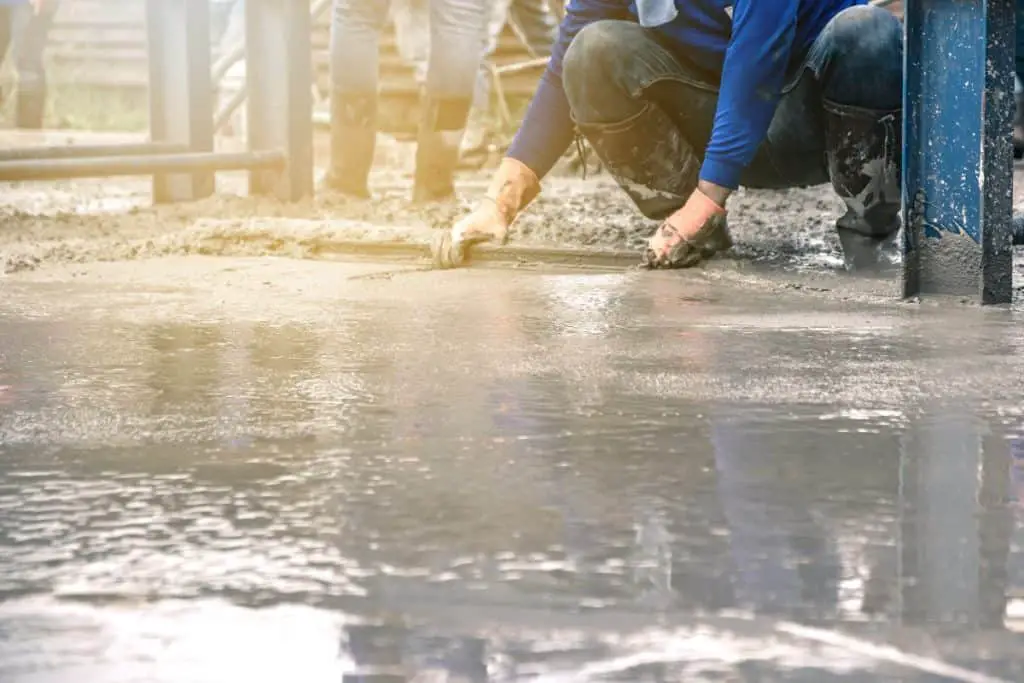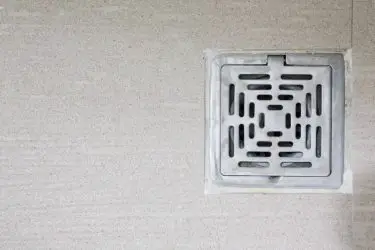Concrete is very sensitive and when it is paired with cold weather, it can cause all sorts of pouring and structural problems. Those first few days after it has been poured need to be carefully monitored so your work is not wasted.
Concrete blankets are important during cold weather pouring. When temperatures drop below 40 degrees Fahrenheit, concrete mixtures will freeze and experience structural damage. Concrete blankets are a heating method used to prevent freezing during the curing process.
It is important to understand why concrete may need blankets, and what use these blankets provide. They can help in a variety of situations that will all help battle the cold weather problem.

Table of Contents
Why Concrete Blankets are Needed – The Science
While concrete work must go on, the cold weather puts a damper on the entire process. Not only are the working conditions cold, but the concrete mixture itself becomes very temperamental.
Heating methods are often put into effect during cold weather because they will prevent the concrete from freezing.
15 to 20% of a concrete mixture is water. When concrete freezes, its strength is cut nearly in half because the water within the mixture freezes and expands, leaving air spaces when the water thaws.
As a matter of fact, water expands 9 percent in volume when it freezes. This causes the concrete to be flaky and porous and contributes to a great deal of compressive strength loss.
Freezing should be avoided for the first two days after it is poured. More importantly, it should be prevented during the first few hours when the concrete mixture is still pliable and wet, and when the ice crystals have the most potential to expand.
Cold weather is often accompanied by dry weather, which is another reason concrete insulating blankets should be used.
Not only do they help the concrete maintain a temperature above 40 degrees, but they also lock in moisture needed to prevent cracks and rapid drying. While it keeps moisture it, it also keeps snow, and rain out of soiling the mixture.
Thermal Insulation
Thermal Insulation reduces the transfer of heat between objects. It continues to keep warm concrete warm and it prevents heat from escaping. This is an important concept to understand as we learn about concrete blankets. While some types of blankets will keep heat in by insulating it, other types can not just help the heat remain but provide heat.
The greater the temperature during the curing process, the quicker the concrete will cure.
For example, concrete kept at 70°F will set in approximately 6 hours, whereas concrete kept at 40°F will take 14 hours to set. Concrete maintained at 70° F will reach a compression strength of 2,700 psi in 3 days; concrete maintained at 40° F will only reach a strength of 1,200 psi in 3 days.”
Source
Types Of Concrete Blankets
Some say straw will keep your concrete warm in really mild situations, but there are a variety of different types of curing blankets that will be more effective in keeping your concrete at optimal temperature!
Electric Blankets
Rather than just trapping heat, electric blankets heat the concrete below uniformly. These are often used in extremely cold temperatures where insulation does not keep it warm enough, or when the strength of the concrete needs to be high.
To ensure concrete that will be run over with heavy machinery is strong enough, it is best to allow it to cure between 50 to 60 degrees Fahrenheit.
Insulation Blankets
These are made of a “type of special material which comes in reinforced polyethylene outer shell. Within it, it is filled with superior, thick layers of polypropylene foam.” This foam is water-resistant and helps keep the concrete dry.
Regular insulation blankets trap heat, and so it is important to have your mixture a little above the desired curing temperature so that the blanket will be able to trap that heat.
An absorbent wet blanket is also an option if the temperature is not very low. These mainly help in trapping moisture but do not hold in much heat. Dependent upon the temperature and weather of your pour, absorbent wet blankets, insulation blankets, or electric blankets will be there to help.
Benefits Of Using Concrete Blankets
As you have already seen from previous paragraphs, concrete blankets can be incredibly beneficial in the cold.
Just like each of us get wrapped up in a blanket to keep from getting cold and being uncomfortable, so concrete blankets aid in the prevention of uncomfortable situations.
- Despite the winter or cold months of the year, the concrete work can continue to move forward with the help of curing blankets.
- They come in a variety of different sizes, so you can find one that works for you.
- They easily fold up and can be transported easily.
- They speed up the rate at which your concrete cures, meaning less time on the job!
- They are tough and durable. They don’t easily rip or break under the pressures of tools and work happening at a work site.
- They are incredibly easy to use, just lay it out over the pour and make sure it won’t blow away!
Other Uses For Concrete Blankets
While concrete blankets are mainly used for concrete that is curing, they can also be used in maintaining the temperature of the ground, bricks, or other building materials.
- Having frozen ground, or a frozen subgrade like gravel or sand makes laying concrete impossible. As soon as the concrete is laid, it would cool too quickly and possibly freeze. It would also cause for frozen water caught within the subgrade to thaw and expand, making the subgrade uneven. When the ground is uneven, the concrete is much more likely to crack. Laying a concrete curing blanket over the ground for a couple days before you pour will help the ground be at the appropriate temperature.
- Even a worksite where concrete is being poured, or other construction is happening, blankets can be laid to provide for thawed areas. Slipping on the job would be no fun, and blankets provide a good working space despite the weather.
- Brickwork can also be tedious in the cold weather. Just as the concrete becomes more susceptible to cracking and damage during cold temperatures, bricks also suffer. Concrete blankets can be laid over newly poured bricks to aid in their eventual strength and set up.
- Covering exposed water pipes with concrete curing blankets will prevent freezing and bursting pipes that happen during times of cold weather.

More Cold Weather Tips
Keeping a concrete blanket on the concrete will help with the problems associated with cold weather, but other tips are also available as you strive to get the best concrete slab despite the cold.
- Remember, you can check the temperature of the concrete by using an infrared temperature gun.
- Place multiple layers of insulation at the edges and corners, as those are the most susceptible to the cold.
- Typically, you can remove the insulation after 2 days, but be sure to not allow any sudden temperature drops. Refrain from using the concrete for about 4 weeks.
- Don’t add too much water to your mixture in cold weather or the curing process will take longer and have a greater capacity to freeze.
- Keep concrete warm by requesting a heated mixture or have extra cement handy to add to the mixture to help in the curing process.
For all cold weather situations, concrete curing blankets can be helpful and effective, but be sure to use them when curing concrete. Those first few days are critical to the strength and durability of your concrete.
Read more: Pouring Concrete in the Cold: How to ensure it won’t crack



